How the horrific Battle of Monte Cassino helped the Allies defeat Nazi Germany
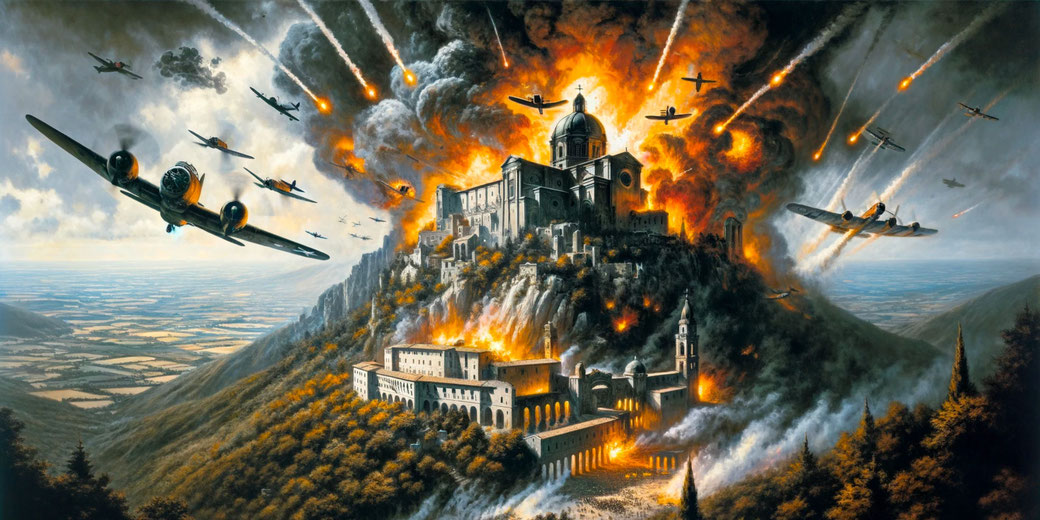
The Battle of Monte Cassino, fought between January and May 1944, was a crucial conflict during World War II, typified the intense struggle between the Allies and Axis powers in Italy.
This protracted battle consisted of four intense assaults by the Allies against the Winter Line, a series of German and Italian defense fortifications.
The strategic objective was to break through these defenses, paving the way for an advance towards Rome, which was vital for both its symbolic value and strategic advantage.
The Allies aimed to draw German troops away from the Eastern and Western Fronts, easing pressure on the Soviet Union and hastening the collapse of Nazi Germany.
Why were the Allies and Germans fighting in Italy?
Following Italy's surrender to the Allies in September 1943, the German military swiftly took control of Northern and Central Italy, establishing a defensive line known as the Gustav Line across the narrowest part of the peninsula.
This line, bolstered by natural geographical features and man-made fortifications, was intended to halt the northward advance of the Allied forces.
Monte Cassino, a rocky hill about 130 kilometers southeast of Rome, became a critical point in the Gustav Line.
The hill, dominated by an ancient Benedictine monastery, offered a strategic vantage point overlooking the Liri valley and the town of Cassino, making it a key defensive position for the German forces.
The Allies, recognizing the importance of breaching this line to advance towards Rome, planned a series of attacks to capture Monte Cassino and break the German defenses.
Which army was stronger?
On the Axis side, the primary defense was undertaken by the German army, which was a mix of seasoned troops and several divisions with varied combat experience.
The German forces were under the command of Field Marshal Albert Kesselring, a respected strategist known for his defensive acumen.
Kesselring's troops included elite units like the 1st Parachute Division, known for their tenacity and effectiveness in combat.
Additionally, various other German divisions, including the 15th Panzergrenadier and the 29th Panzergrenadier divisions, played significant roles in the defense.
These units were well-entrenched in the formidable Gustav Line, utilizing the natural rugged terrain and fortifications to their advantage.
On the other side, the Allied forces consisted of a multinational coalition, reflecting the global nature of World War II.
The command structure was complex, with overall leadership initially under the American General Dwight D. Eisenhower, followed by British General Harold Alexander as the Commander of the Allied Armies in Italy.
Under them were several army group commanders, including American General Mark Clark of the Fifth Army and British General Bernard Law Montgomery before his departure for the Normandy invasion.
The U.S. II Corps, British X Corps, and the French Expeditionary Corps were key components of the Allied assault.
Notably, the Polish II Corps under General Władysław Anders played a crucial role, particularly in the final assault.
Additionally, troops from New Zealand, Canada, India, Morocco, Algeria, and other nations contributed significantly, each bringing unique combat experiences and skills to the challenging terrain and harsh conditions of the Italian campaign.

The battle breaks out...
The Battle of Monte Cassino, a critical series of four assaults, spanned from January to May 1944, each marked by intense fighting and strategic complexity.
The first battle began on January 17, 1944, when the Allied forces launched their initial assault.
This attack, primarily led by the U.S. Fifth Army and the British X Corps, faced fierce resistance from the entrenched German defenders.
The Allies aimed to breach the Gustav Line by capturing the town of Cassino and the monastery hill.
Despite their efforts, including heavy aerial and artillery bombardment, the Allied forces could not dislodge the Germans, and the assault concluded on February 11, 1944, without achieving its objective.
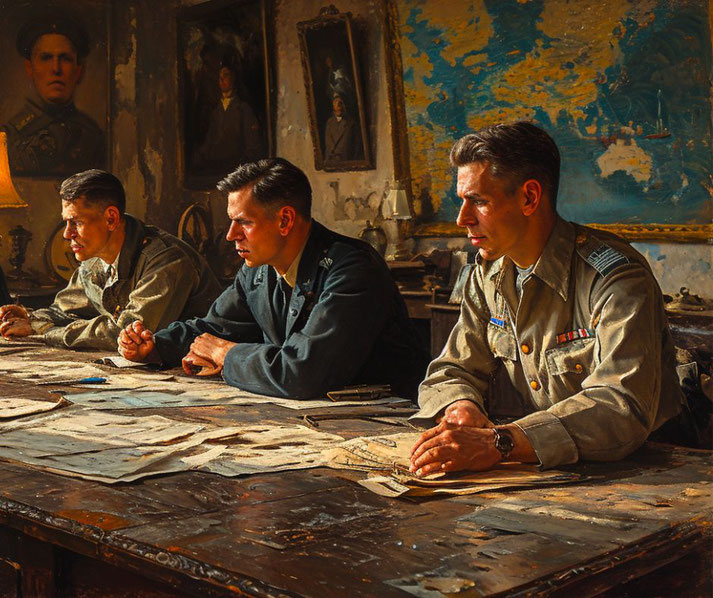
The impossible challenges facing the Allies
One of the most significant obstacles faced by the Allied forces was the formidable natural terrain.
The steep, rocky slopes of the Monte Cassino hill, combined with the dense, rugged terrain of the surrounding area, made any military maneuver extremely difficult.
The winter weather added to these difficulties, with rain, cold, and fog often hampering visibility and movement, turning the ground into a muddy quagmire that impeded the advance of infantry and vehicles alike.
Additionally, the well-entrenched German defenses, part of the Gustav Line, were a formidable barrier.
The Germans had constructed a series of strong defensive positions, utilizing the natural terrain to their advantage and creating a network of bunkers, minefields, and barbed wire that made any frontal assault costly and time-consuming.
The psychological toll on the soldiers was immense. They faced constant danger from artillery, sniper fire, and counterattacks.
The prolonged nature of the battle, with its four distinct phases spread over several months, led to a sense of weariness and frustration.
Many soldiers suffered from what was then known as "battle fatigue" (now recognized as post-traumatic stress disorder), due to the unrelenting stress and horrors of the combat they experienced.
Civilians in the region also suffered greatly. The town of Cassino, near the monastery, was almost completely destroyed during the battle.
Many residents had fled their homes, but those who remained faced the terror of constant bombardment, a shortage of food and medical supplies, and the ever-present threat of being caught in the crossfire.
The destruction of homes and infrastructure left a lasting impact on the local population, who had to rebuild their lives from the ruins after the war.
The second attempt to dislodge the Germans
A second attack commenced on February 15, 1944. This phase is particularly notable for the controversial decision to bomb the ancient Monte Cassino Monastery on February 15, following suspicions that it was being used as a German observation post.
However, the destruction of the monastery did not yield the expected military advantage.
Instead, it provided the German forces with better defensive positions amidst the ruins.
Once again, the Allied advance was halted, and the fighting in this phase ended by the end of February.
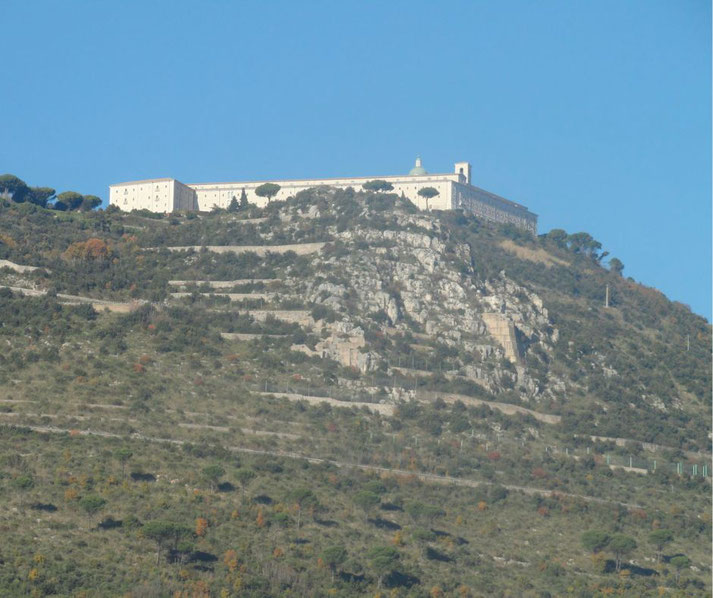
Why the Allies chose to destroy the monastery
The Monte Cassino Monastery, perched atop a hill in the Italian region of Lazio, played a significant role in the Battle of Monte Cassino, one of the most contentious points of World War II.
Founded in 529 AD by St. Benedict, the monastery had been a center of religious study and a repository of cultural treasures for centuries.
During the battle, its strategic location overlooking the Liri Valley made it a focal point of military operations.
Initially, both the Allies and the Axis powers recognized the monastery's historical and cultural significance, attempting to avoid its destruction.
However, as the battle intensified, the Allies grew suspicious that the Germans were using it as an observation post to direct artillery fire.
Despite a lack of clear evidence that the monastery was being actively used by German forces, the decision was made to neutralize what was perceived as a significant threat to the Allied advance.
On February 15, 1944, in the second phase of the battle, the Allies launched an intense aerial bombardment that led to the monastery's near-total destruction.
This action was controversial and remains debated by historians. The destruction of the monastery did not provide the tactical advantage the Allies had hoped for.
Instead, the ruins offered the German defenders a stronger defensive position, complicating further the task of the Allied forces.
In the aftermath of the bombing, German paratroopers occupied the ruins, enhancing their defensive capabilities.
The rugged terrain surrounding the monastery and the town of Cassino, coupled with the newly created rubble from the bombed-out monastery, made the Allied advance exceedingly difficult.
The struggle to take Monte Cassino evolved into a grueling war of attrition, marked by fierce close-quarter battles amidst the ruins.
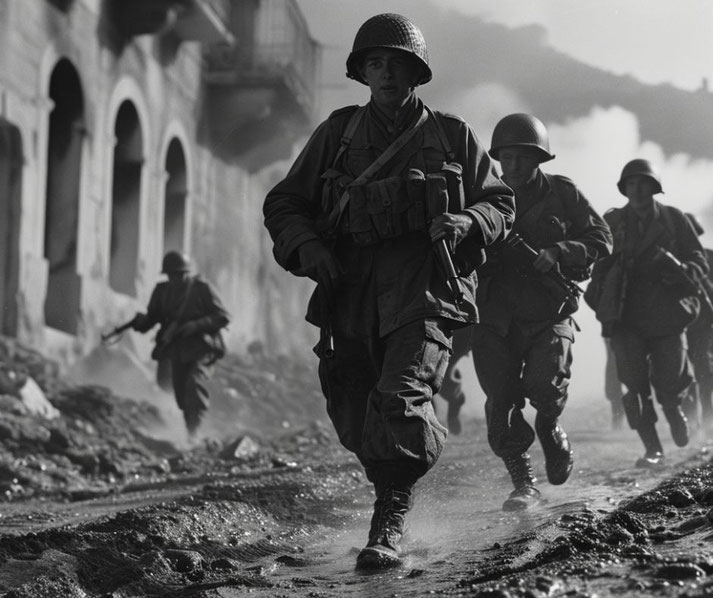
How the Allies finally achieved victory
The third battle, starting in mid-March 1944, saw a renewed effort by the Allies.
This time, the main assault was led by the New Zealand Corps, including Indian and Moroccan units.
They made several attempts to capture the town of Cassino and the monastery hill but were met with robust German resistance and counterattacks.
Harsh weather conditions and the difficult terrain further hampered the Allied operations.
By the end of March, this phase too had ended in a stalemate.
The fourth and final assault, known as Operation Diadem, began on May 11, 1944.
This operation involved a massive coordinated effort by several Allied armies, including the U.S. Fifth Army and the British Eighth Army, now under the command of General Oliver Leese.
The Polish II Corps, under General Władysław Anders, played a particularly crucial role.
The operation started with a massive artillery barrage, followed by a full-scale infantry assault.
This time, the Allies were able to break through the German defenses, leading to the capture of Monte Cassino.
The German forces withdrew on May 18, marking the end of the battle. This victory was pivotal, as it opened the way for the Allied advance towards Rome, which was liberated on June 4, 1944.
The staggering death toll from the battle
The Battle of Monte Cassino was one of the most costly battles of the Second World War in terms of human life.
The exact number of casualties is difficult to determine precisely, but estimates suggest staggering figures on both sides.
Over the course of the four battles, from January to May 1944, the Allies suffered approximately 55,000 casualties.
These losses were distributed among the various national forces involved, including the United States, the United Kingdom, Poland, Canada, New Zealand, India, and other Allied nations.
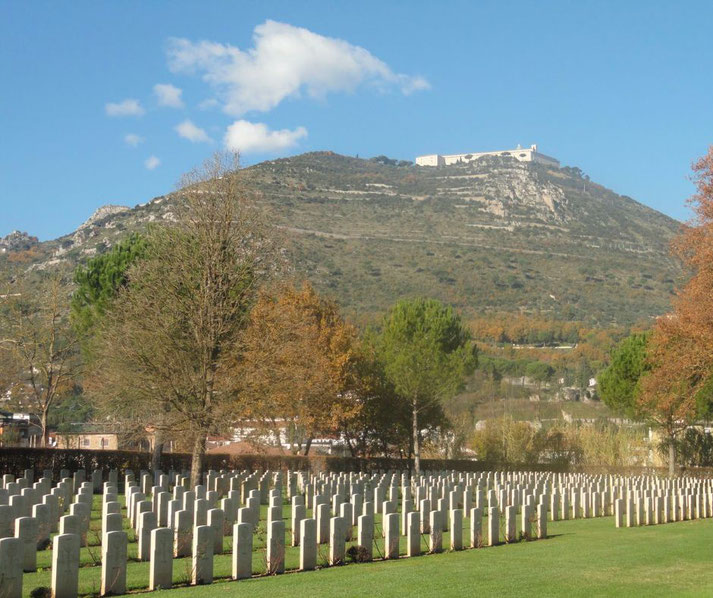
The German forces, defending their positions along the Gustav Line and at Monte Cassino itself, also endured significant losses.
It is estimated that the Germans suffered around 20,000 casualties during the entire campaign.
This figure includes both killed and wounded soldiers, reflecting the intensity and ferocity of the combat.
The civilian population in the surrounding areas also suffered heavily. The town of Cassino, located near the monastery, was almost completely destroyed during the series of battles.
Many civilians were killed or wounded, and thousands were displaced from their homes, adding to the tragedy of the conflict.
These high casualty figures reflect the brutal nature of the Battle of Monte Cassino.
The challenging terrain, the strength of the German defenses, and the determination of the Allied forces to break through at any cost resulted in prolonged and bloody combat.
What do you need help with?
Download ready-to-use digital learning resources
Copyright © History Skills 2014-2025.
Contact via email
With the exception of links to external sites, some historical sources and extracts from specific publications, all content on this website is copyrighted by History Skills. This content may not be copied, republished or redistributed without written permission from the website creator. Please use the Contact page to obtain relevant permission.





